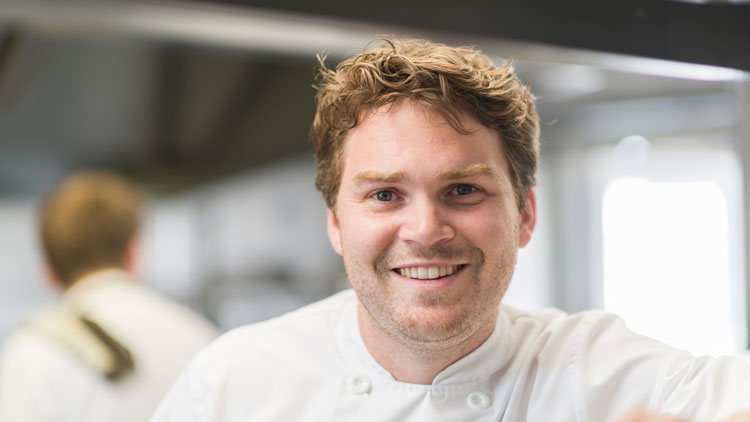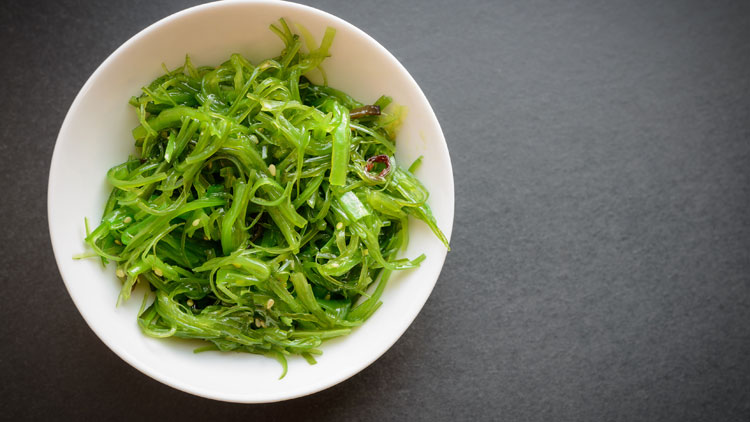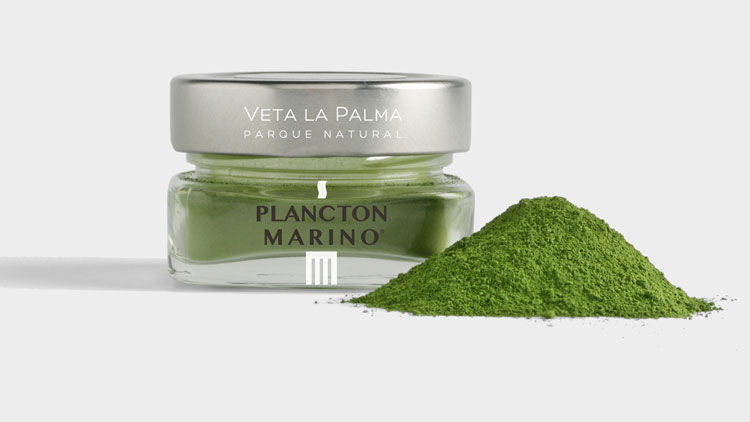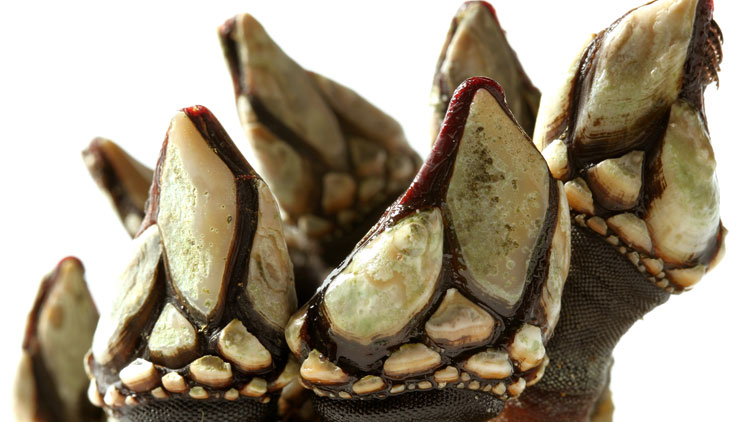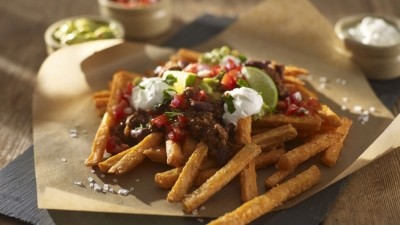Are you ready for this jelly?

The jellyfish has a bad rep in western culture, an alien looking creature that’s known more for its nasty sting than its gastronomic potential. But there’s a compelling argument for us to eat more of them. Jellyfish are thriving in European waters thanks to a rise in temperature and the removal of many of its natural predators by the fishing industry.
In fact their numbers are so vast that many scientists believe we should be removing as many as possible from our seas. Jellyfish can kill vast schools of wild fish, play havoc with aquaculture and disrupt beach-side economies, with holiday makers keen to avoid an enactment of that scene from Friends.
It’s also believed to be almost impossible to overfish jellyfish because removing one from the sea does not stop a new one from being born because they spawn from polyps attached to the bottom of the ocean.
With fish stocks under intense pressure, a plentiful source of marine protein is something to be celebrated. But can chefs be persuaded to cook with it and – even more importantly – will customers eat it?
A taste for texture
Jellyfish are considered a delicacy in east Asia but are prized more for their texture than for their flavour, a problematic concept for most westerners. “The tricky thing about jellyfish is that it is pretty much tasteless,” says Chinese food expert and restaurant consultant Fuchsia Dunlop. “In order to enjoy it you have to appreciate the texture. That’s something that comes very naturally to Chinese people, but less so to us.”
The good news, Dunlop explains, is that the texture is not especially challenging. “It’s a cross between squid and transparent starch noodles, the ones made with mung bean flour. Most westerners I’ve introduced to it have really liked it.”
Jellyfish is often available in UK Chinese and Korean restaurants and is occasionally seen in Japanese restaurants too.
Typically only the hood of the jellyfish is eaten, but in China’s lower Yangtze region, the subject of Dunlop’s most recent Chinese regional cookbook Land of Fish and Rice, people love the texture of jellyfish so much that they eat the frilly oral arms and tentacles too. “That’s another texture altogether – simultaneously slithery and crisp, which is a combination the Chinese love,” says Dunlop.
In China, Japan and Korea, jellyfish is typically served as a cold appetiser with a flavourful dressing. Its subtle marine taste has a particular affinity with sesame and it’s often combined with ingredients that complement its texture, such as cucumbers, noodles and chicken.
“It’s particularly associated with the barbecued meat platters that are served at weddings and other big celebrations,” says Andrew Wong, chef-patron of the newly Michelin-starred A Wong in London. “We used to do a dish based on those platters: a salad composed of roast meats and slithers of jellyfish. It wasn’t a great seller so we took it off. British people are a bit squeamish about it.”
Wong enjoys the texture of jellyfish, likening it to very al dente pasta. “But the amount of seasoning you need to put on to make it taste good is astounding. It’s more of a textural thing,” he says. Like every other Chinese chef in London, Wong orders his jellyfish in pre-processed.
It is normally sold brined in vac pack bags but can also be purchased dried. Both products are widely available from Asian supermarkets and other Asian suppliers and need to be soaked before use to remove excess salt and other preservatives.
Unmistakably of the ocean
Ambitious restaurants may want to explore serving jellyfish a bit fresher. Corey Lee believes fresh jellyfish to be one of the sea’s greatest delicacies and serves it at his three-Michelin-starred Benu restaurant in San Francisco. “It must be eaten within hours of being killed,” he says in his book Benu. “The gut and mouth on the underside of the umbrella are removed, the tentacles and arms are cut off, and the skin is scraped to remove the membrane.”
This leaves just the mesoglea – the gelatinous wobbly hemisphere that has a texture that’s comparable to long-cooked beef tendon – and a taste that is “unmistakably of the ocean”.
His signature jellyfish dish sees very fresh jellyfish cubed and served in a beef bouillon with thyme blossoms, proving that the ingredient can be successfully combined with non-Asian flavours. If it’s good enough for one of the US’s most exciting and accomplished cooks, it’s likely good enough for adventurous chefs on this side of the pond too. But how do they go about getting one?
Inspired by Lee’s cookbook, Bristol-based chef Josh Eggleton has been trying to source a fresh jellyfish for some time. “Our waters are full of the fuckers but my fisherman thinks I’m mental. ‘What do you want with one of them?’, I think he said. But as I understand it, there’s little difference to the jellyfish we have here to the ones consumed on the other side of the world.
"I’m desperate to get my hands on one because I want to demonstrate that there’s a lot of stuff in the sea that we could and should be eating.”
Sourcing the right jellyfish
Along with lack of demand, part of the problem is that UK fishermen don’t know what they are looking for. There are hundreds of different species of jellyfish and not all of them are edible. Restaurant spoke to two specialist ingredient suppliers and both claimed that not a single customer had ever requested a freshly caught jellyfish.
“It’s not a product I’ve ever dealt with. They will be taken out of the water occasionally but they’re never landed because there’s zero demand,” says Ritter Courivaud head of sales Steve Downey.
But fishermen elsewhere in Europe are targeting jellyfish with a view to selling them to the domestic Asian market and exporting them to Asia. To badly misquote Destiny’s Child, the UK would appear not yet ready for this jelly.
Diving a bit deeper: three other marine products that are underappreciated on these shores
Seaweed
The first time Josh Eggleton ordered seaweed from a supplier he didn’t have a great experience. “It was bloody horrible, all slimy and covered in rock salt. We had to wash it dozens of time to make it edible,” he recalls.
Suppliers have now found better ways to deliver seaweed, with many cleaning it and then drying it for chefs to rehydrate as and when they need it. At Eggleton’s Michelin-starred Somerset gastropub The Pony & Trap, seaweed finds its way into all manner of preparations including beurre blanc and cured salmon.
“We love it now. We use sea lettuce, dulse – actually pretty much everything that the Cornish Seaweed Company does. We could probably be accused of putting it in too many of our dishes, come to think of it,” says Eggleton, who also uses seaweed in a salad of beetroot and blackberries at his recently opened Root restaurant in central Bristol.
He is by no means the only ambitious chef to use seaweed in his dishes. Other notable seaweed fans are The Ledbury’s Brett Graham and The Sportsman’s Stephen Harris. But despite its popularity within the upper echelons of the restaurant world, the ingredient has yet to reach the mainstream, despite being packed with flavour, highly adaptable and plentiful.
Interestingly, seaweed was widely consumed in coastal areas of the UK just a few generations ago but fell out of favour as the country industrialised. “Dulse was particularly popular. It was mixed into butter and also toasted and served as a snack. It remains a fantastic match with beer,” says Amy Brewer, marketing manager for the Edinburgh-based Mara Seaweeds, which is hoping to get more people to cook with seaweed by repositioning it as a seasoning.
“Dealing with whole leaf can be a bit off-putting so we dry it and make it into powders and flakes,” she continues. “Seaweed is packed with flavour and minerals and other nutrients but very low in calories so selling it as a seasoning makes sense.”
The company sells dulse and kombu varieties alongside a number of blends and even a smoked variant. With chefs under pressure to reduce the sodium content of their food, seaweed has huge potential as a replacement for salt. When dried out and processed, it’s much lower in sodium than table salt and is packed full of umami.
Plancton Marino
Plancton Marino is something of an interloper in this discussion because it is a product of aquaculture. A type of microalgae, Plancton Marino is cultivated in El Puerto de Santa Maria near Cadiz in south-west Spain.
The product has been developed and pioneered by two-Michelin-starred Spanish chef Angel Leon whose nearby Aponiente is the world’s most ambitious seafood restaurant. His current menu starts with the Plancton Marino before gradually working its way up the marine food chain, an eye-opening ocean voyage that includes seaweed carbonara, and sea iberico, a fish-based sausage that mimics chorizo.
Plancton Marino is the first and, so far, the only company licensed to grow plankton for human consumption. Technically a vegetable, it is incredibly high in minerals and vitamins and is also a source of omega 3 and 6 fatty acids. The product is freeze-dried and sold as a brilliant-green powder for around £3,000 per kg (a little goes a long way). It is available through specialist supplier Ritter Courivaud and is currently being used by a handful of top-end restaurants, including Mikael Jonsson’s Hedone in west London.
“I was a bit sceptical at first, I didn’t know what to do with it,” says Jonsson. “But about a year ago, I was playing around with caviar dishes and I found the flavours to be a good match. It’s very high in umami. First, I made a sauce that combined the two that we served with wild sea bass and, more recently, I made it into a savoury custard, which I served with sea urchin.”
Jonsson also uses Plancton Marino in a dish entitled ‘fake tofu’, which may or may not be a tongue-in-cheek reference to the fact the Swedish food blogger-turned-maverick chef actively deters vegetarians from visiting his Chiswick restaurant. The dish sees fish stock, Jerusalem artichoke and Plancton Marino set with a starch to mimic the appearance and texture of silken tofu.
Goose barnacles
Considered a delicacy in northern Spain and Portugal, goose barnacles are filter feeding crustaceans that attach themselves to rocks as well as man-made objects. They are typically boiled in brine and served unadorned alongside a chilled glass of vinho verde.
They taste vividly of both the sea and the rocks they cling to.
The goose barnacles of Galicia in north-west Spain are prized worldwide and cost hundreds of euros per kilo. Those sourced from nearby Portugal are much cheaper. They are very difficult to harvest because they thrive in areas that are battered by the sea. Harvesting goose barnacles – or Percebes as they are called in Spain – is an extremely dangerous endeavour, hence the high price.
Although they occasionally wash up on UK beaches attached to floating objects, most goose barnacles available in the UK will come from Spain, Portugal and Morocco. At the moment they are rarely seen on UK menus – partially because of their price tag but also, one suspects, because of their somewhat interesting appearance.
This is a web version of an article that first appeared in the November issue of Restaurant magazine, the leading title for the UK's restaurant industry. For more features, comment, interviews and in-depth analysis of the restaurant sector subscribe to Restaurant magazine here
